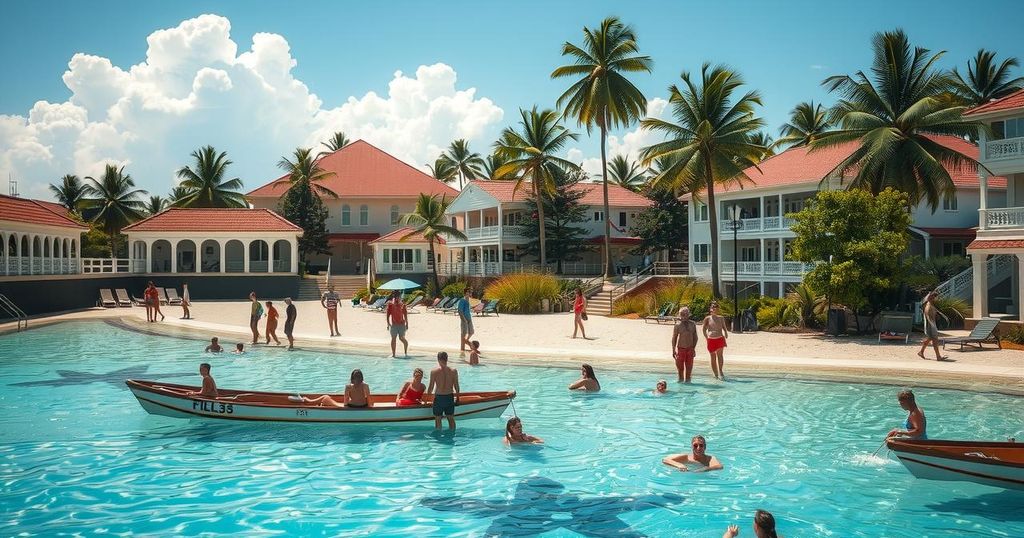Uruguay anticipates a 16% increase in tourism spending this Summer, primarily driven by an influx of Argentine visitors benefiting from a stabilized peso. As Brazilian tourism wanes, Uruguay’s affordability and government incentives enhance appeal. A record number of crossings and reservations suggest a strong recovery in the sector, reversing previous spending habits of Argentinians who previously favored vacationing in their home country.
Uruguayan tourism officials anticipate a 16% rise in spending by foreign tourists during the upcoming Summer season, primarily fueled by an increase in Argentine visitors. This surge is expected as the Argentine peso stabilizes under Javier Milei’s Libertarian administration, contrasting with a recent decline in the Brazilian real. Notably, Argentine tourist bookings have surged, indicating a robust recovery of the sector despite challenges faced by Brazil’s economy.
In 2023, Argentinians had spent nearly US$ 1.2 billion in Argentina, a trend that is shifting as they start to vacation in Uruguay. The San Martin International Bridge in Fray Bentos has seen substantial traffic, highlighting the influx of Argentine visitors eager to experience recreational offerings in Uruguay. The days preceding Christmas witnessed approximately 40,000 Argentinians and 9,000 Brazilians traversing into Uruguay, resulting in heavy traffic at border crossings.
The affordability of rental prices in tourist destinations in Uruguay compared to the Argentine coast has made it an attractive option for Argentine nationals, especially given Argentina’s challenging economic landscape. Moreover, with many Uruguayan citizens opting not to visit Argentina as frequently, the allure of vacationing within their own borders has strengthened.
Furthermore, tax incentives from the Uruguayan government, such as a full VAT exemption on food services and vehicle rentals for Argentine tourists, have further enhanced Uruguay’s appeal. As a result of these dynamic circumstances, additional tourism from Uruguayans traveling to Brazil is anticipated to leverage the advantageous exchange rate.
The elimination of the 30% PAIS tax on outbound credit card transactions under Milei has made popular destinations like Punta del Este more accessible for Argentine travelers. The Uruguayan Real Estate Chamber projects an additional 400,000 tourists this season compared to last, signaling a significant boost in tourism-related expenditures.
The current state of the Uruguayan tourism industry is influenced heavily by the Argentine economic climate, particularly with recent Recuperation in its currency, the peso. Following Javier Milei’s Libertarian economic policies, the stabilization of the peso is attracting more Argentine tourists to Uruguay. Consequently, Uruguayan tourism analysts predict a noteworthy increase in spending, indicating a revitalization of the sector after years of adverse economic impacts in the region. Additionally, governmental measures such as tax exemptions have positioned Uruguay as a favorable vacation destination in comparison to Argentina. The Brazilian market, however, presents a contrasting scenario as the devaluation of the Brazilian real has diminished its attractiveness for international tourists. This shift opens opportunities for Uruguay to capitalize on increased Argentine tourism during the Summer season.
In summary, the upcoming Summer season in Uruguay is poised for substantial growth, marked by an anticipated 16% increase in foreign tourist spending, predominantly from Argentina. Economic shifts under Javier Milei’s administration are expected to reverse historical spending tendencies, with numerous Argentine nationals seeking vacationing options within Uruguay due to favorable pricing and government incentives. As both nations navigate their respective economic landscapes, Uruguay stands to benefit significantly from this influx of visitors, leading to a competitive tourism market in the Southern Cone.
Original Source: en.mercopress.com






